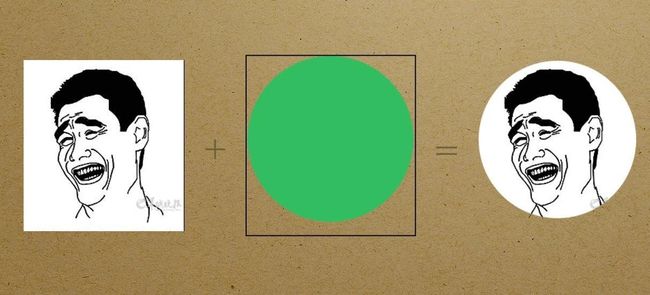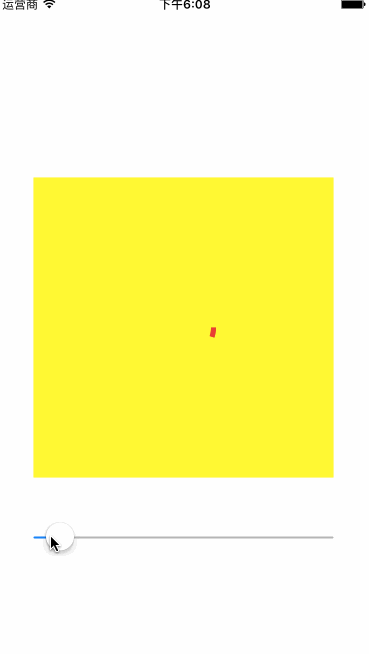IOS-Quartz2D & CALayer & CAShapeLayer
转自:http://www.jianshu.com/p/91b0cb25d4cb
内容都是来自别人的帖子,自己学习用的,做一个简单的汇总。需要查看原帖的,请看帖子底部的参考文章部分。
1.Quartz2D
提起iOS中的绘图控件,必然会想到Quartz2D。Quartz 2D是⼀个二维绘图引擎,同时支持iOS和Mac系统。Quartz2D的API来自于CoreGraphics框架,数据类型和函数基本都以CG作为前缀,如CGContextRef、CGPathRef。 Quartz 2D能完成的工作:
- 绘制图形 : 线条\三角形\矩形\圆\弧等
- 绘制文字
- 绘制\生成图片(图像)
- 读取\生成PDF
- 截图\裁剪图片
-
自定义UI控件
一般在开发中,给图片添加水印,合并图片,自定义UI控件(UIKit框架中没有的)等。 一般情况下,通过苹果官方的UIKit库就可以搭建常见的UI界面了,但是如果通过UIKit框架不能实现的一些UI界面,就需要我们自己来通过Quartz2D进行绘制了。
自定义UI控件是Quartz2D中非常重要的一个功能
使用Quartz2D 绘图有2种方式: 方式一:直接调用Quartz2D的API 进行绘图 方式二:调用 UIKit 框架封装好的 API 进行绘图(代码简单,但是只能是文字和图片)
绘图的基本步骤: 1.开启图形上下文(如果是自定义view,不需要这一步,但是必须在drawRect方法中获取context,在这里才能获取和view相关联的context)
UIGraphicsBeginImageContext(size)2.获取图形上下文
CGContextRef context = UIGraphicsGetCurrentContext();3.设置上下文的一些属性(颜色,线宽)
CGContextSetRGBStrokeColor(context, 1.0, 1.0, 1.0, 1.0);
CGContextSetRGBFillColor(context, 1.0, 1.0, 1.0, 1.0);
CGContextSetLineWidth(context, 2.0);
CGContextSetLineJoin(context, kCGLineJoinRound);// 设置连接处的样式
CGContextSetLineCap(context, kCGLineCapRound);// 设置头尾的样式
//UIColor本身提供了setStroke,setFill的方法
[[UIColor purpleColor] setStroke];4.拼接路径(绘制图形)
1.
CGContextMoveToPoint(context, 50, 50);
CGContextAddLineToPoint(context, 100, 100);
2.
CGMutablePathRef path = CGPathCreateMutable();
CGPathMoveToPoint(path, NULL, 100, 100);
CGPathAddLineToPoint(path, NULL, 200, 200);
CGContextAddPath(context, path);
3.
UIBezierPath* path = [[UIBezierPath alloc] init];
[path moveToPoint:CGPointMake(100, 100)];
[path addLineToPoint:CGPointMake(200, 200)];
CGContextAddPath(context, path.CGPath);
4.纯OC方法
// 创建路径对象
UIBezierPath* path = [UIBezierPath bezierPath];
// 拼接
[path moveToPoint:CGPointMake(100, 100)];
[path addLineToPoint:CGPointMake(200, 200)];
[path setLineWidth:30];
[path setLineJoinStyle:kCGLineJoinBevel];
// 通过路径对象 渲染
[path stroke];5.渲染
CGContextStrokePath(context);
CGContextFillPath(context);
CGContextEOFillPath(context);
CGContextDrawPath(context,drawModel); //很多的模式,stroke、fill....
CGContextStrokeRectWithWidth(context.lineWidth);//stroke的同时,设置了线宽
CGContextStrokeLineSegments //画线段
[UIBezierPath stroke];6.关闭上下文(关闭路径)
CGContextClosePath(context)
- (void)closePath; //oc
UIGraphicsEndImageContext()iOS中提供了绘制各种图形的方法
1.C代码
CGContextAddLineToPoint //直线
CGContextAddCurveToPoint //曲线
CGContextAddQuadCurveToPoint //四方曲线(暂时先这样翻译吧)
CGContextAddRect //矩形
CGContextAddEllipseInRect //椭圆
CGContextAddArc //圆弧
2.OC代码(UIBezierPath)
- (void)moveToPoint:(CGPoint)point;
- (void)addLineToPoint:(CGPoint)point;
- (void)addCurveToPoint:(CGPoint)endPoint controlPoint1:(CGPoint)controlPoint1 controlPoint2:(CGPoint)controlPoint2;
- (void)addQuadCurveToPoint:(CGPoint)endPoint controlPoint:(CGPoint)controlPoint;
- (void)addArcWithCenter:(CGPoint)center radius:(CGFloat)radius startAngle:(CGFloat)startAngle endAngle:(CGFloat)endAngle clockwise:(BOOL)clockwise示例代码:
- 创建圆形图片的方法:关于这块有挺多东西的,需要的话可以参考iOS 高效添加圆角效果实战讲解,这篇帖子的评论部分也提供了好多别人的框架
- (instancetype)circleImage {
// 开启图形上下文
UIGraphicsBeginImageContext(self.size);
// 获取上下文
CGContextRef ctx = UIGraphicsGetCurrentContext();
// 添加一个圆
CGRect rect = CGRectMake(0, 0, self.size.width, self.size.height);
CGContextAddEllipseInRect(ctx, rect);
// 裁剪
CGContextClip(ctx);
// 绘制图片
[self drawInRect:rect];
// 获得图片
UIImage *image = UIGraphicsGetImageFromCurrentImageContext();
// 关闭图形上下文
UIGraphicsEndImageContext();
return image;
}自定义view(自定义UI控件)
⾃定义view的步骤:
(1)新建⼀个类,继承自UIView
(2)实现-(void)drawRect:(CGRect)rect⽅法
注:1.绘制的方法必须写在drawRect:方法中,只有在这里才能获取和view相关联的上下文
2.drawRect:什么时候调用(不能自己调用,只能通过系统调用这个方法)。
当view第一次显示到屏幕上时(被加到UIWindow上显示出来)
调用view的setNeedsDisplay或者setNeedsDisplayInRect:时
自定义圆形进度条(drawRect实现):
1.进度值 -- 开放一个progressValue属性
2.根据进度值,重绘UI界面 --[self setNeedsDisplay],然后系统会自动调用drawRect方法
- (void)setProgressValue:(CGFloat)progressValue {
_progressValue = progressValue;
[self setNeedsDisplay];// 重绘
}
- (void)drawRect:(CGRect)rect {
UIBezierPath* path = [UIBezierPath bezierPathWithArcCenter:self.center radius:self.frame.size.width < self.frame.size.height ? self.frame.size.width * 0.3 : self.frame.size.height * 0.3 startAngle:-M_PI_2 endAngle:2 * M_PI * self.progressValue - M_PI_2 clockwise:1];
[path setLineWidth:3];
[[UIColor blueColor] setStroke];
[path stroke];// 渲染
}注:在drawRect方法中绘图,
1.不需要创建图形上下文。 -- 这里可以直接获取到和view相关联的上下文
2.使用UIBezierPath(OC方法),不需要获取图形上下文,内部苹果已经封装了
3.不需要关闭上下文
圆形进度条,在这里其实就可以和SDWebImage结合起来,实现一个图片加载的进度显示了。这里贴一个SDWebImage进度显示简单Demo
2. CALayer
在iOS中CALayer的设计主要是了为了内容展示和动画操作,CALayer本身并不包含在UIKit中,它不能响应事件。由于CALayer在设计之初就考虑它的动画操作功能,CALayer很多属性在修改时都能形成动画效果,这种属性称为“隐式动画属性”。但是对于UIView的根图层而言属性的修改并不形成动画效果,因为很多情况下根图层更多的充当容器的做用,如果它的属性变动形成动画效果会直接影响子图层。另外,UIView的根图层创建工作完全由iOS负责完成,无法重新创建,但是可以往根图层中添加子图层或移除子图层。
CALayer的基本使用
设置圆角
view.layer.cornerRadius = 5; view.layer.maskToBound = YES;注意,如果设置了maskToBounds=YES,那将不会有阴影效果
设置边框
view.layer.boarderWidth = 5; view.layer.boarderColor = [UIColor redColor].CGColor;设置旋转
view.layer.transform = CATransform3DMakeRotation(M_PI_4, 0, 0, 1);设置阴影
view.layer.shadowColor = [UIColor grayColor].CGColor; view.layer.shadowOffset = CGSizeMake(10, 10); view.layer.shadowOpacity = 0.5;注意,如果设置了maskToBounds=YES,那将不会有阴影效果
设置背景图片
view.layer.content = [UIImage iamgeNamed:@"xxx"].CGImage;自定义layer
layer和view是紧密相连的,所以他们的操作很相似。自定义layer需要重写
drawInContext方法,自定义view需要重写drawRect方法。针对view的操作最终都会作用到layer上
- (void)drawInContext:(CGContextRef)ctx {
// 设置为蓝色
CGContextSetRGBFillColor(ctx, 0, 0, 1, 1);
//绘制图形的方法和view是一样的都是使用Quartz2D,参考Quartz2D部分
// 渲染
CGContextFillPath(ctx);
}注意:需要刷新控件时,不能自己手动调用这个方法,而是使用[self setNeedsDisplay]
CALayer的mask属性
mask属性之前从来没有使用过,感觉很陌生,所以特意找了一下这方面的。使用CALayer的Mask实现注水动画效果这个效果很不错,直接拿过来了
mask实际上是layer内容的一个遮罩,如果我们把mask设置成透明的,实际看到的layer是完全透明的(这个layer就看不到了),也就是说只有mask的内容不透明的部分和layer叠加的部分才会显示出来,效果如下:
一张图片说明了一切,代码就不贴了,直接参考原作者的吧。
设计的思路参考《基于Core Animation的KTV歌词视图的平滑实现》,Facebook Shimmer。
CALayer的动画 -- Core Animation
这个内容就太多了,动画部分不多说,注意:核心动画作用在layer上。
贴几篇动画相关文章
iOS动画-从UIView动画说起
iOS动画-Transform和KeyFrame动画
iOS动画-layout动画初体验
iOS动画-layout动画的更多使用
iOS动画-碎片动画
iOS动画-认识CoreAnimation
3. CAShapLayer
- CAShapeLayer继承自CALayer,可使用CALayer的所有属性
- CAShapeLayer需要和贝塞尔曲线配合使用才有意义。
在苹果的General Tips and Tricks可以找到这句话The CAShapeLayer class creates its content by rendering the path you provide into a bitmap image at composite time. - 使用CAShapeLayer与贝塞尔曲线可以实现不在view的DrawRect方法中画出一些想要的图形
The CAShapeLayer class draws a cubic Bezier spline in its coordinate space. //CAShapeLayer这个类是用来绘制三次贝塞尔曲线的
CAShapeLayer结合贝塞尔曲线(UIBezierPath)**
UIBezierPath在Quartz2D部分有介绍,CGPathRef是基于C语言的路径,UIBezierPath是OC版的,用法很类似。他们都是用来绘制曲线的
绘制的方法
+ (instancetype)bezierPath;
+ (instancetype)bezierPathWithRect:(CGRect)rect;
+ (instancetype)bezierPathWithOvalInRect:(CGRect)rect;
+ (instancetype)bezierPathWithRoundedRect:(CGRect)rect cornerRadius:(CGFloat)cornerRadius; // rounds all corners with the same horizontal and vertical radius
+ (instancetype)bezierPathWithRoundedRect:(CGRect)rect byRoundingCorners:(UIRectCorner)corners cornerRadii:(CGSize)cornerRadii;
+ (instancetype)bezierPathWithArcCenter:(CGPoint)center radius:(CGFloat)radius startAngle:(CGFloat)startAngle endAngle:(CGFloat)endAngle clockwise:(BOOL)clockwise;
+ (instancetype)bezierPathWithCGPath:(CGPathRef)CGPath;
- (void)moveToPoint:(CGPoint)point;
- (void)addLineToPoint:(CGPoint)point;
- (void)addCurveToPoint:(CGPoint)endPoint controlPoint1:(CGPoint)controlPoint1 controlPoint2:(CGPoint)controlPoint2;
- (void)addQuadCurveToPoint:(CGPoint)endPoint controlPoint:(CGPoint)controlPoint;
- (void)addArcWithCenter:(CGPoint)center radius:(CGFloat)radius startAngle:(CGFloat)startAngle endAngle:(CGFloat)endAngle clockwise:(BOOL)clockwise示例代码:
1. 自定义圆形进度条(CAShapLayer实现):
CAShapLayer中有两个非常关键的属性strokeEnd,strokeStart。自定义圆形进度条(drawRect实现)中,我们是通过调用[self setNeedDisplay]方法来实现视图的绘制的,但是在CAShapLayer中,直接设置strokeEnd就可以直接自动的去绘制视图更新,不需要我们操作什么,就像设置view的frame,bounds等一样,系统自动帮我们做了。
//
// CustomProgressLayer.m
// CAShapeLayer实现圆形进度条
//
// Created by yangguangyu on 16/8/31.
// Copyright © 2016年 yangguangyu. All rights reserved.
//
#import "CustomProgressLayer.h"
@implementation CustomProgressLayer
- (instancetype)init
{
self = [super init];
if (self) {
[self setup];
}
return self;
}
-(void)setup {
self.strokeColor = [UIColor redColor].CGColor;
self.fillColor = [UIColor clearColor].CGColor;
self.lineWidth = 5;
self.strokeStart = 0;
self.strokeEnd = 0;
}
-(void)addProgressLayerOnView:(UIView *)view {
self.frame = view.bounds;
UIBezierPath *path = [UIBezierPath bezierPathWithArcCenter:CGPointMake(self.frame.size.width * 0.5, self.frame.size.height * 0.5) radius:self.frame.size.width * 0.1 startAngle:0 endAngle:2 * M_PI clockwise:YES];
self.path = path.CGPath;
[view.layer addSublayer:self];
}
-(void)setProgressValue:(CGFloat)progressValue {
_progressValue = progressValue;
if (progressValue < 0) {
progressValue = 0;
}else if (progressValue > 1) {
progressValue = 1;
}
self.strokeEnd = progressValue;
}
@end在www.raywenderlich.com官网上,有一个非常不错的圆形图片加载动画
前面我们已经实现了圆环的效果,只需要在图片加载完成的时候添加一个动画
-(void)reveal {
self.superlayer.mask = self;
//动画
CABasicAnimation *lineAnimation = [CABasicAnimation animationWithKeyPath:@"lineWidth"];
// lineAnimation.toValue = @(300);//这里决定了中间最后状态时中心圆环的大小
lineAnimation.toValue = @(self.bounds.size.width);
CABasicAnimation *pathAnimation = [CABasicAnimation animationWithKeyPath:@"path"];
UIBezierPath *toPath = [UIBezierPath bezierPathWithOvalInRect:self.bounds].CGPath;
pathAnimation.toValue = toPath;//这里决定了最外层
CAAnimationGroup *group = [[CAAnimationGroup alloc] init];
group.animations = @[lineAnimation,pathAnimation];
group.duration = 2;
group.timingFunction = [CAMediaTimingFunction functionWithName:kCAMediaTimingFunctionEaseInEaseOut];
group.removedOnCompletion = NO;
group.fillMode = kCAFillModeForwards;
[self addAnimation:group forKey:nil];
}原版的是swift的,原贴How To Implement A Circular Image Loader Animation with CAShapeLayer,自己用OC也写了一份demo
2. 绘制虚线(不用CAShaprLayer也可以实现,直接使用Quartz2D)
/**
** lineView: 需要绘制成虚线的view
** lineLength: 虚线的宽度
** lineSpacing: 虚线的间距
** lineColor: 虚线的颜色
**/
+ (void)drawDashLine:(UIView *)lineView lineLength:(int)lineLength lineSpacing:(int)lineSpacing lineColor:(UIColor *)lineColor
{
CAShapeLayer *shapeLayer = [CAShapeLayer layer];
[shapeLayer setBounds:lineView.bounds];
[shapeLayer setPosition:CGPointMake(CGRectGetWidth(lineView.frame) / 2, CGRectGetHeight(lineView.frame))];
[shapeLayer setFillColor:[UIColor clearColor].CGColor];
// 设置虚线颜色为blackColor
[shapeLayer setStrokeColor:lineColor.CGColor];
// 设置虚线宽度
[shapeLayer setLineWidth:CGRectGetHeight(lineView.frame)];
[shapeLayer setLineJoin:kCALineJoinRound];
// 设置线宽,线间距
[shapeLayer setLineDashPattern:[NSArray arrayWithObjects:[NSNumber numberWithInt:lineLength], [NSNumber numberWithInt:lineSpacing], nil]];
// 设置路径
CGMutablePathRef path = CGPathCreateMutable();
CGPathMoveToPoint(path, NULL, 0, 0);
CGPathAddLineToPoint(path, NULL, CGRectGetWidth(lineView.frame), 0);
[shapeLayer setPath:path];
CGPathRelease(path);
// 把绘制好的虚线添加上来
[lineView.layer addSublayer:shapeLayer];
}3. 给UIView添加分隔线
在很多情况下,我们需要给UIView添加一个分隔线,尤其是使用UITableView的时候,经常会自己搞分割线,以前我的做法是在cell的底部添加一个高度为1的UIView,使用CAShapeLayer或者CALayer可以不用再添加view了,直接搞一个layer上去。写一个UIView的分类
//
// UIView+BorderLine.m
// CAShapeLayer分割线
//
// Created by yangguangyu on 16/9/2.
// Copyright © 2016年 yangguangyu. All rights reserved.
//
#import "UIView+BorderLine.h"
@implementation UIView (BorderLine)
-(void)addBorderTopLine:(CGSize)size andColor:(UIColor *)color {
[self addBorderLineWithframe:CGRectMake(0, 0 , size.width, size.height) andColor:color];
}
-(void)addBorderLeftLine:(CGSize)size andColor:(UIColor *)color {
[self addBorderLineWithframe:CGRectMake(0, 0, size.width, size.height) andColor:color];
}
-(void)addBorderBottomLine:(CGSize)size andColor:(UIColor *)color {
[self addBorderLineWithframe:CGRectMake(0, self.frame.size.height - size.height, size.width, size.height) andColor:color];
}
-(void)addBorderRightLine:(CGSize)size andColor:(UIColor *)color {
[self addBorderLineWithframe:CGRectMake(self.frame.size.width - size.width, 0, size.width, size.height) andColor:color];
}
#pragma mark - padding
-(void)addBorderTopLine:(CGSize)size andColor:(UIColor *)color andPadding:(CGFloat)padding {
[self addBorderLineWithframe:CGRectMake(padding, 0 , size.width - 2 * padding, size.height) andColor:color];
}
-(void)addBorderLeftLine:(CGSize)size andColor:(UIColor *)color andPadding:(CGFloat)padding {
[self addBorderLineWithframe:CGRectMake(0, padding, size.width, size.height - 2 * padding) andColor:color];
}
-(void)addBorderBottomLine:(CGSize)size andColor:(UIColor *)color andPadding:(CGFloat)padding {
[self addBorderLineWithframe:CGRectMake(padding, self.frame.size.height - size.height, size.width - 2 * padding, size.height) andColor:color];
}
-(void)addBorderRightLine:(CGSize)size andColor:(UIColor *)color andPadding:(CGFloat)padding {
[self addBorderLineWithframe:CGRectMake(self.frame.size.width - size.width, padding, size.width, size.height - 2 * padding) andColor:color];
}
//-------
-(void)addBorderLineWithframe:(CGRect)frame andColor:(UIColor *)color {
CAShapeLayer *layer = [CAShapeLayer layer];
layer.frame = frame;
layer.backgroundColor = color.CGColor;
[self.layer addSublayer:layer];
}
@end作者:零点知晨
链接:http://www.jianshu.com/p/91b0cb25d4cb
來源:简书
著作权归作者所有。商业转载请联系作者获得授权,非商业转载请注明出处。



